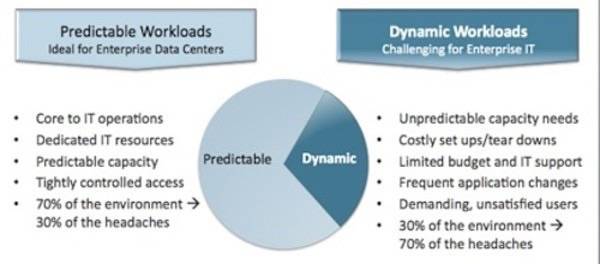Editor’s note: We offer our long-term sponsors the opportunity to write posts and tell their story. These posts are clearly marked as written by sponsors, but we also want them to be useful and interesting to our readers. We hope you like the posts and we encourage you to support our sponsors by trying out their products.

Today’s IT managers are facing a classic conundrum.
On the one hand, we all recognize that IT sandbox environments are an emerging necessity. Companies increasingly need a place for dynamic workloads, such as migration and software evaluations, security testing, pre-production test beds, training sessions and IT labs.
And yet these IT sandbox environments typically aren’t compatible with the capital-intensive in-house data center resources we’re accustomed to utilizing. Unlike well-planned data center workloads, sandbox workloads are characterized by fluctuating capacity needs and other rapid changes, and they often require intensive tactical IT support – none of which is well-suited to the traditional data center model.
Essentially, it boils down to “what we need” vs. “what we have,” a debate that’s now commonplace in IT shops around the globe. Is there a solution to this puzzle? How can organizations take advantage of all the benefits IT sandbox environments offer if these dynamic workloads don’t fit conventional IT ecosystems?
At Skytap, we believe we have found an answer to the conundrum. The solution, as we see it, is in the cloud.
In fact, in many ways, IT sandbox environments are ideal candidates for transition to the cloud. Think about it. First, sandbox environments offer a low-risk adoption path to cloud computing. Plus, they also can provide high ROI, since resource utilization can be aligned with demand and users can be empowered with self-service -both of which can significantly reduce costs and IT support burden.

Need more proof? Let us walk you through three of our top ten reasons why it makes sense for you to rethink the way you’re managing your IT sandbox environments. For example, if you transition your IT sandbox environments to the cloud, you can:
- Eliminate infrastructure constraints on the business. A cloud service enables infrastructure capacity to be added quickly – often in less than a day! – to meet business demand. What’s more, costs go down because cloud services are provided using a utility billing model, so you only pay for what you use.
- Avoid expensive application rewrites. Ensure your cloud provider supports a wide variety of operating systems, databases, application servers and infrastructure tools so that your machines can keep the same networking settings and host names and connect to onsite infrastructure as required. The goal is for your IT and development teams to use a cloud service as an extension of their on-site IT environment and to run existing applications, virtual machines and systems unchanged in the cloud.
- Reduce data center cost and complexity. Why use costly in-house data centers to support dynamic workloads? By contrast, cloud services are generally billed on a variable, pay-as-you-use model, so an organization can convert large upfront capital expenditures into needs-based operational expenses. Savings can be immediate. In addition, aligning computing capacity with demand helps minimize ongoing support costs, and you can apply quotas to individuals and organizations to cap usage and/or hard budgets. Skytap’s solution even enables virtual data center environments to be automatically suspended when not in use to avoid unnecessary charges.
. . . and that’s just the start of our list!
Want to learn even more? For additional information, please download this white paper:
Top Ten Reasons to Transition Your IT Sandbox Environments to the Cloud.
We’re convinced that it’s time for you to rethink the way you manage your IT sandbox environments. By transitioning these dynamic workloads to the cloud, you can start reaping a wide range of significant IT benefits, including lower costs, enhanced agility and improved productivity.
Photo by trublueboy.










